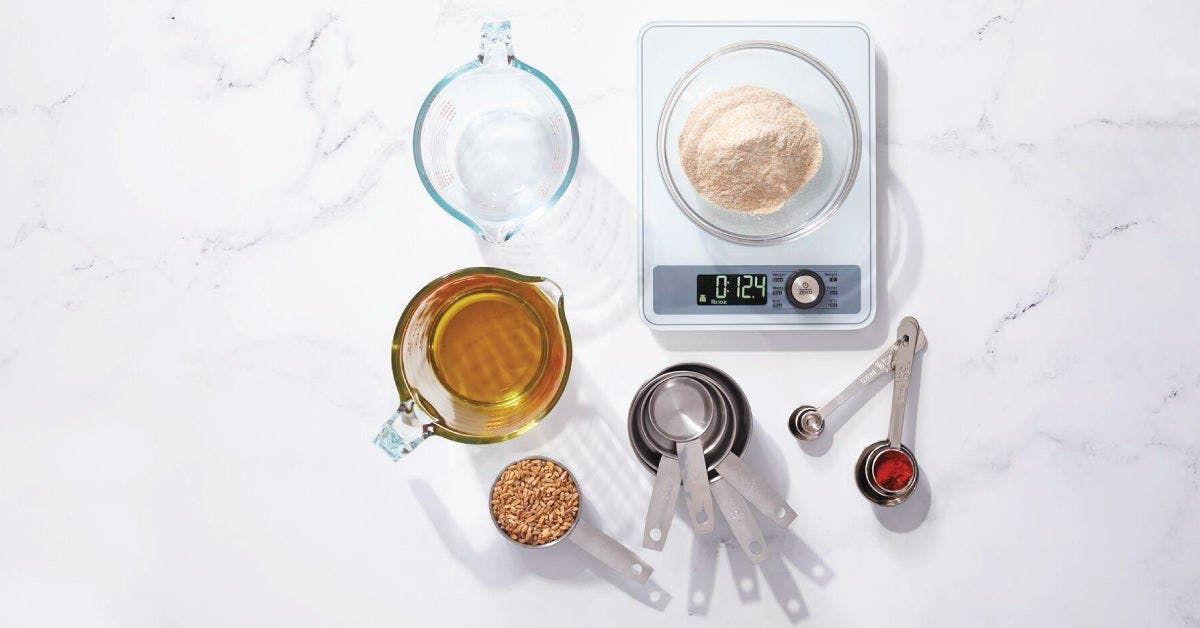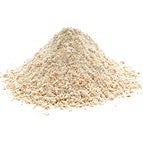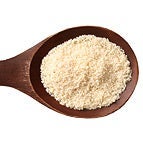The Best Flours to Use For Cooking and Baking


How flour is made
Yes, flour is made from ground wheat. But it can also be made from ground chickpeas, almonds, chestnuts — even potatoes. And even all-purpose flour isn’t made from just one kind of wheat. Truth is, flour is one of the most versatile and diverse categories of ingredient.
Choosing the right flour for a recipe can make a world of difference. Here’s the rundown of the flours we can find in our neighborhood supermarket — as well as tips and secrets for buying and storing this multifaceted staple.
First, a definition: Flour is a powdery culinary ingredient made from ground grains, seeds or nuts.
Why is it ground? Milling improves a grain’s digestibility — and permits it to be morphed into baked goods and stew thickeners. You can’t make muffins from wheat berries alone, nor can you thicken a stew with them. But you sure can with all-purpose flour, made from ground wheat berries.
Grains were originally ground by hand in mortars with pestles or wooden sticks. Later, they were made under rotary grinding stones kept in motion by cows, oxen or horses. Today, factory mills grind grains with separators, washers, aspirators, scourers and even magnets.
In general, the grains are crushed under steel rollers. For most types of flour, the creamy endosperm is pulverized into dust and separated into various textures ("fine" and "coarse," for example). The bran and germ are most often removed and shipped elsewhere to be turned into animal feed. Whole-grain flours always include the bran and usually the germ in the ground mix.
Before we get to the many kinds of flour, here’s a rundown of the basics.
Nutritional info of ingredients in flour |
|---|
| Look for these key terms on the labels: |
|
| Also keep these tips in mind: |
|
How to store flour at home |
| Follow these common-sense guidelines when you’re working with the flours you’ve bought: |
|
Types of flour

|
All-Purpose FlourThis is blend of flours is made from both hard- and soft-wheat varietals. It’s designed to give you a balance of glutens that will lead to better baked goods in a wide range of recipes. The specific blends of all-purpose flours vary from manufacturer to manufacturer — and are closely guarded secrets. Try different brands to see which is best for you. All-purpose flour is sometimes called “refined flour” or “plain flour.” So-called “double-zero flour” is a very finely ground all-purpose flour, prized for making the best pizza crusts. |

|
Bread FlourGround from hard winter wheat, which has a higher gluten (and thus higher protein) content, this flour is used in bread-making because: 1) it builds a better structure to create a tender crumb, 2) it can absorb more liquid to keep breads firmer over time, 3) it can stand up to kneading without turning gummy. If a recipe calls for bread flour and you only have all-purpose flour on hand, add 1 additional tablespoon all-purpose flour for every cup of bread flour that’s called for. |

|
Cake FlourThis low-gluten (and thus low-protein) flour will yield tender, light-as-air baked goods every time. However, because of complex combinations in baking chemistry, only use cake flour in recipes that call for it. If a recipe asks for cake flour and you only have all-purpose flour on hand, use 7/8 cup all-purpose flour plus 2 tablespoons cornstarch for every cup of cake flour. |

|
Whole-Wheat FlourMade from the ground endosperm, bran and germ of the wheat kernel, this is a hearty, nutty-tasting flour — and most often a proprietary blend of wheat varietals. The extra fiber in the bran acts as a moisture sponge and can turn baked goods tough — or cause them to dry out after a day. In general, use whole-wheat flour only in recipes that specifically call for it. Whole-wheat flour can go rancid quickly; store it in a sealed container in the freezer. |

|
Whole-Wheat Pastry FlourThis is very finely ground whole-wheat flour. It is usually made from low-protein, soft wheat — and so can be used as a great, whole-grain substitute for all-purpose flour in hearty, sturdy cakes and cookies. (Do not substitute whole-wheat pastry flour in lighter, more airy cakes like angel food cake or sponge cakes.) |

|
Self-Rising FlourThis American standard is all-purpose flour with baking powder and salt in the mix. In other words, it’s pre-leavened flour. Do not substitute self-rising flour for all-purpose flour in recipes. Some manufacturers also make self-rising cake flour. |

|
Semolina FlourSometimes sold as “pasta flour,” semolina flour is made from ground durum wheat, a particularly hard, dry wheat — which keeps noodles from turning gummy in the heat. While used in a variety of Italian recipes, semolina flour can also be substituted for cornmeal when you’re dusting pizza boards, cutting boards or rolling pins. |

|
Spelt FlourMade from a specific, ancient, wheat varietal, spelt flour has a more savory taste than some wheat flours. Because it's not as sweet, it's a good choice for thickening stews and soups. It is not gluten-free, despite some claims to the contrary. However, some people with wheat allergies can tolerate spelt flour (although not those with celiac disease). Health-food stores often sell sprouted spelt flour with an herbaceous, earthy flavor, best for savory baking. |

|
Rye FlourThis full-flavored flour from rye berries is used as the basis of many breads in Germany, Eastern Europe and Scandinavia. It's rather sweet in flavor — the sour notes we often associate with "rye" come from the sourdough base used for most of these breads. Rye flour is usually mixed with wheat flour in baking because rye flour lacks the basic glutens to create tender bread. The one bread made exclusively with rye flour is chewy pumpernickel. |

|
Corn FlourMade from dried corn, corn flour is a superfine, light flour. Use it in corn muffins or cornbread recipes instead of cornmeal for a smoother, less crumbly texture. When the corn is first treated with food-grade lime, the flour ground from it morphs into masa harina, the basis of tamales and tortillas. Corn flour should not be confused with cornmeal (a coarser grind), or with corn-muffin mix (a preleavened product) or with cornstarch (which is sometimes called "corn flour" in British English). |

|
Chickpea FlourWith its smoky, musky flavor, this gluten-free flour, ground from dried chickpeas, is a favorite in Indian cooking — and in Italian cooking in the Ligurian region. It's best in savory dishes — and can be mixed with equal parts water for an egg substitute in many vegan recipes. It's sometimes called "gram flour," "garbanzo flour," or "besan." |

|
Rice FlourMade from ground rice, this is the basic flour used to make baked goods for those with gluten allergies. It's also the basis of many Asian sweets, used to create paper-thin, slightly sticky doughs, batters and crepes. Two specialty rice flours are often found in Asian markets: Glutinous rice flour is made from a highly sticky rice and prized for its gummy texture in steamed or boiled sweets; brown rice flour, from ground brown rice, is less sticky and used to make the edible rice-paper wrappers in many packaged Asian candies. |

|
Almond FlourMade from ground almonds, almond flour is the most common nut flour you can find at large supermarkets or health-food stores. Although it lacks the glutens to make it a good thickener for stews and soups, almond flour can be successfully used in cookies, cakes, quick breads and other baked goods. In fact, all nut flours are particularly delicious in sweet treats. However, because of the different structure they create in batters, use nut flours only in recipes specifically formulated for their chemical makeup. |

|
Buckwheat FlourMade from ground buckwheat, buckwheat flour is familiar to most of us as the basis for earthy, nutty-tasting whole-grain pancakes and waffles. It's also used to make soba noodles in Japan, blini in Russia, crepes in Brittany and a variety of savory and sweet dishes on certain religious holidays in India. |
